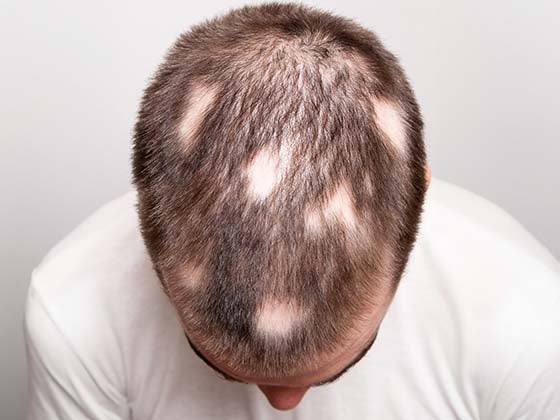Diaper rash is a common skin condition that affects infants and young children who wear diapers. It is characterized by red, irritated, and sometimes swollen skin in the diaper area. Here are the symptoms, types, causes, and treatments for diaper rash:
Symptoms:
-
Redness and irritation of the skin in the diaper area
-
Swelling or inflammation of the affected skin
-
Small bumps or pimples on the skin
-
Dry or scaly skin in the diaper area
-
Soreness, tenderness, or pain when touched or rubbed
Types:
-
Contact diaper rash: This is the most common type of diaper rash and is caused by irritation from wet or soiled diapers that are left on for too long.
-
Yeast diaper rash: This type of diaper rash is caused by a yeast infection and is characterized by bright red, raised bumps and lesions that are surrounded by redness.
-
Bacterial diaper rash: This type of diaper rash is caused by a bacterial infection and is characterized by pus-filled bumps and lesions.
Causes:
-
Prolonged exposure to urine or faeces
-
Friction from the diaper rubbing against the skin
-
Chafing or irritation from tight-fitting diapers or clothing
-
Allergic reaction to certain diaper materials or detergents
-
Yeast or bacterial infections
Treatments:
-
Change your baby's diaper frequently and as soon as possible after it becomes wet or soiled.
-
Use water or mild baby wipes to clean your baby's diaper area instead of harsh soaps or alcohol-based products.
-
Allow your baby's skin to air dry before putting on a new diaper.
-
Apply a barrier cream, such as petroleum jelly or diaper rash cream, to protect the skin and prevent further irritation.
-
If the rash is caused by a yeast or bacterial infection, your doctor may prescribe an antifungal or antibiotic medication.
-
Avoid using tight-fitting diapers or clothing that may rub or irritate the affected area.
If the rash is severe or does not improve with treatment, consult a doctor for further evaluation and treatment.
What is diaper rash?

Diaper rash is a common skin irritation that affects infants and toddlers. It typically appears as red, inflamed skin in the diaper area, including the buttocks, genital area, and folds of the thighs.
The rash can range from mild to severe and may be accompanied by symptoms such as itching, pain, and discomfort. In some cases, it may also cause small red bumps, blisters, or pustules.
Diaper rash is usually caused by prolonged exposure to moisture, friction, and irritants such as urine and faeces. Other factors that can contribute to diaper rash include infrequent diaper changes, sensitive skin, and the use of harsh soaps or wipes.
Treatment for diaper rash typically involves keeping the affected area clean and dry, changing diapers frequently, and using a barrier cream or ointment to protect the skin. In severe cases, a doctor may prescribe a medicated cream or ointment to help reduce inflammation and promote healing.
Identifying signs of diaper rash

Identifying signs of nappy rash is critical for parents and carers to address the problem and provide relief to the baby. Common signs of nappy rash include redness, skin irritation, raised bumps or lesions, skin peeling or flaking, spreading rash, the presence of pustules, persistent discomfort and crying or fussiness. It is important to note that not all diaper-related redness or irritation is the result of a rash. Some babies may experience mild redness on occasion as a result of normal skin sensitivity or exposure to moisture. However, if you notice persistent or worsening symptoms, you should see a paediatrician or healthcare provider for an accurate diagnosis and treatment. They can suggest appropriate interventions, such as diaper rash creams, ointments, or antifungal medications, to relieve the baby's discomfort and promote healing.
Understanding fungal vs. yeast diaper rashes

Understanding the distinction between fungal and yeast nappy rash is critical for successful treatment and management. While the terms "fungal" and "yeast" are commonly used interchangeably, they refer to two distinct types of infections that can affect the nappy area. Here's how to distinguish between the two.
-
Fungal Diaper Rash:
-
Fungal diaper rash, also called dermatophyte or tinea diaper rash, is caused by fungi like Candida albicans, which thrive in warm, moist environments like the diaper area.
-
Fungal nappy rash usually appears as bright red, inflamed patches of skin with distinct borders. The affected area may be raised and appear slightly scaly or pustular.
-
If not treated or changed promptly, fungal nappy rash can spread to other areas of the body, including the thighs, abdomen and genital area.
-
Antifungal medications, such as topical antifungal creams or ointments, are frequently used to treat fungal nappy rash by killing fungi and reducing inflammation.
-
Yeast Diaper Rash:
-
Yeast diaper rash, also known as candidal diaper rash, is caused by an excessive growth of yeast, specifically Candida albicans, in the diaper area. Yeast diaper rash is a type of fungal diaper rash caused by yeasts.
-
Yeast diaper rash typically presents as bright red, inflamed patches of skin with raised borders and satellite lesions (smaller red bumps or pustules) surrounding the main rash.
-
Yeast diaper rash is usually more severe and persistent than other types of diaper rash, necessitating medical attention for proper treatment.
-
Antifungal medications, such as topical or oral agents, are commonly used to treat and relieve yeast nappy rash symptoms.
Diaper rash in newborns vs. older babies

Diaper rash affects newborns and older babies differently, depending on skin sensitivity, frequency of diaper changes, and underlying health conditions. Here is a comparison of nappy rash in newborns and older babies:
-
Skin Sensitivity: Newborns have delicate, sensitive skin that is more susceptible to irritation and inflammation. Their skin may be more prone to diaper rash as a result of frequent bowel movements, acidic urine, and prolonged contact with moisture in the diaper.
-
Frequency of Diaper Changes: Newborns often need more frequent nappy changes than older babies because they can soil their diapers with urine and stool several times per day. Infrequent diaper changes can increase the risk of diaper rash by allowing moisture, bacteria, and irritants to stay in contact with the skin for long periods.
-
Type of Diaper: Newborns may have different reactions to various types of diapers, including disposable diapers, cloth diapers, and diaper covers. Some babies may be more sensitive to certain materials or chemicals found in disposable diapers, while others may develop diaper rash from friction or chafing caused by cloth diapers.
-
Dietary Factors: For breastfed newborns, diaper rash may be influenced by maternal diet and breastfeeding patterns. Certain foods or medications consumed by the mother may affect the baby's digestion and stool composition, potentially leading to diaper rash. Formula-fed newborns may also experience diaper rash if they have sensitivities or allergies to certain ingredients in infant formula.
-
Immune System Development: Newborns have developing immune systems that may not be as effective at fighting off infections or skin irritations compared to older babies. This can make them more susceptible to diaper rash, especially if they have underlying health conditions or compromised immune function.
-
Activity Level: Older babies who are more active and mobile may develop diaper rash due to increased friction and rubbing against the diaper. They may also have different eating habits and bowel patterns than newborns, which can influence the frequency and severity of nappy rash.
-
Underlying Health Conditions: Some newborns and older babies may have underlying health conditions that make them prone to nappy rash, such as eczema, food allergies, or gastrointestinal problems. These conditions can worsen skin sensitivity and raise the risk of nappy rash.
What causes diaper rash?

Diaper rash is a common condition that affects many infants and toddlers. It is caused by a combination of factors, including:
-
Moisture: Prolonged exposure to moisture from urine and feces can irritate the skin, making it more vulnerable to rash.
-
Friction: The constant rubbing of the diaper against the skin can cause irritation and chafing, leading to rash.
-
Chemical irritants: Substances such as detergents, baby wipes, and even some diaper creams can irritate the skin and cause a rash.
-
Bacterial or yeast infections: These can develop when moisture is trapped in the diaper area for too long, creating an environment where bacteria and yeast can thrive.
-
Food allergies: Some babies may develop a diaper rash as a result of an allergic reaction to certain foods.
Preventing diaper rash involves keeping the diaper area clean and dry, changing diapers frequently, using a barrier cream, and avoiding harsh chemicals and perfumes in soaps and wipes. If the rash does not improve with home care or appears to be getting worse, it is important to seek medical advice from a healthcare provider.
The role of diet and antibiotics

Diet and antibiotics can both contribute significantly to the development and management of nappy rash in babies. Here's how they affect nappy rash:
-
Diet:
-
For breastfed babies, the mother's diet can sometimes influence the composition of the baby's stool, increasing the likelihood of nappy rash. Certain foods eaten by the mother, such as spicy foods, citrus fruits, or allergenic foods, may cause changes in the baby's stool consistency or pH levels, increasing the risk of nappy rash.
-
Formula-fed babies may develop nappy rash as a result of sensitivities or allergies to infant formula ingredients. Some babies may react to cow's milk protein, soy protein, or other additives in formula, resulting in gastrointestinal issues and changes in stool frequency or consistency.
-
As babies progress to solid foods, their diet becomes more diverse, which can affect their bowel movements and stool composition. The introduction of new or allergenic foods may increase the risk of nappy rash in some babies, particularly those with sensitivities or allergies to specific foods.
-
Antibiotics:
-
Antibiotics are medications used to treat bacterial infections, but they can also upset the balance of bacteria in the gut, resulting in changes in stool consistency and frequency. This disruption of the gut microbiota can cause diarrhoea or loose stools, both of which can contribute to nappy rash.
-
Babies who are given antibiotics for ear infections, respiratory infections, or urinary tract infections may develop gastrointestinal symptoms such as diarrhoea or nappy rash. Antibiotic-associated diarrhoea can irritate the skin in the diaper area, increasing the likelihood of diaper rash.
-
Prolonged or frequent antibiotic use can also increase the risk of yeast overgrowth, specifically Candida albicans, in the nappy area. Yeast diaper rash, also known as candidal diaper rash, is characterised by bright red, inflamed skin patches with raised borders and satellite lesions that frequently require antifungal treatment to resolve.
Cloth diapers vs. disposable: Impact on rash

The choice between cloth and disposable diapers can influence the occurrence and management of diaper rash in babies. Here's how each diaper type may affect diaper rash:
-
Cloth Diapers:
-
Cloth diapers are frequently made from breathable materials like cotton or bamboo, which promotes better air circulation around the baby's bottom. Improved airflow can help reduce moisture buildup and promote skin dryness, potentially decreasing the risk of nappy rash.
-
Some cloth diapers have less absorbent materials than disposable diapers, requiring more frequent diaper changes to avoid leaks. Frequent diaper changes can help keep the baby's skin dry and reduce the risk of diaper rash caused by prolonged exposure to moisture.
-
Cloth diapers are typically free of the chemicals, fragrances, and dyes that disposable diapers contain. Babies with sensitive skin or allergies may benefit from using cloth diapers, which are less likely to cause skin irritation or allergic reactions.
-
To remain clean and sanitary, cloth diapers must be washed regularly and maintained properly. Improper washing or drying of cloth diapers can cause bacterial or fungal growth, which can contribute to diaper rash if the baby's skin comes into contact with the contaminated diapers.
-
Disposable Diapers:
-
Disposable diapers are designed to be highly absorbent, wicking moisture away from the baby's skin and trapping it within the diaper core. This can help keep the baby's skin dry and reduce the risk of nappy rash caused by prolonged contact with wetness.
-
Disposable diapers are convenient and simple to use, especially for busy parents or carers who may not have access to laundry facilities or do not want to deal with the hassle of washing cloth diapers. However, long-term use of disposable diapers with infrequent changes may increase the risk of diaper rash.
-
Some disposable diapers include chemicals, fragrances, and dyes that can irritate the baby's skin or cause allergic reactions. Babies with sensitive skin or eczema may be more prone to developing diaper rash when using disposable diapers with added chemicals.
-
While disposable diapers are convenient, they can be more expensive than cloth diapers over time, especially for low-income families. Choosing low-cost disposable diapers can help you save money while maintaining quality and performance.
The effect of weather on diaper rash incidence

Weather can affect the occurrence and severity of nappy rash in babies. Here's how different weather conditions affect nappy rash:
-
Warm and Humid Weather: Warm and humid weather can cause moisture buildup in the diaper area, increasing the risk of diaper rash. Excessive sweating, combined with the diaper's warm, moist environment, can provide an ideal breeding ground for bacteria and fungi, increasing the risk of skin irritation and inflammation. Babies may also be more susceptible to heat rash (miliaria) in hot and humid weather, which can aggravate diaper rash by irritating the skin in the diaper area.
-
Cold and Dry Weather: Cold and dry weather can make the skin dry and chapped, making it more prone to irritation and cracking. In babies, this can manifest as dry, flaky skin in the diaper area, raising the risk of diaper rash. Additionally, using indoor heating during cold weather can dry out the air even more, resulting in lower humidity levels indoors. Dry air can cause skin dryness and irritation, increasing the risk of nappy rash.
-
Seasonal Changes: Seasonal changes can also affect nappy rash incidence. Babies, for example, may be more susceptible to nappy rash in the summer due to increased sweating and humidity. In contrast, during the winter, babies' skin may become dry and chapped, which can lead to nappy rash. Seasonal allergies, such as pollen or mould allergies, can worsen skin inflammation and irritation, increasing the risk of nappy rash in sensitive babies.
-
Sun Exposure: Sun exposure can worsen diaper rash by causing sunburn and increasing skin sensitivity in the diaper area. Babies who spend extended periods outdoors without adequate sun protection may be more likely to develop nappy rash, especially in areas exposed to direct sunlight.
Applying sunscreen to the baby's exposed skin, including the diaper area, can help protect against sunburn and lower the risk of sun-induced diaper rash.
How to treat diaper rashes in babies

Diaper rash is a common skin irritation that affects many babies. It occurs when the skin in the diaper area is irritated by moisture, friction, or contact with urine or stool. Here are some steps you can take to treat diaper rashes in babies:
-
Keep the area clean and dry: Change your baby's diaper frequently, and use a gentle cleanser and warm water to clean the area. Pat the skin dry with a soft towel before putting on a new diaper.
-
Use a barrier cream: Apply a thick layer of diaper cream or ointment to the affected area before putting on a clean diaper. The cream can help protect the skin from further irritation.
-
Let the skin air out: When possible, give your baby some diaper-free time to allow the skin to dry and breathe. Lay your baby on a towel or waterproof mat and let them play without a diaper for a while.
-
Avoid tight-fitting diapers and clothing: Loose-fitting clothing and diapers can help reduce friction and irritation on the skin.
-
Consider using cloth diapers: Cloth diapers can be gentler on the skin than disposable diapers, but they require frequent washing and changing.
-
Consult a healthcare provider: If the rash is severe or does not improve within a few days, or if your baby has a fever, it's important to consult your healthcare provider. They may recommend a prescription cream or medication to treat the rash.
Remember to always wash your hands before and after changing your baby's diaper to avoid spreading germs. With proper care, most diaper rashes will improve within a few days.
Home remedies vs. medicated treatments

Parents can treat nappy rash at home or with medication, depending on the severity of the rash and personal preference. Here's a comparison of home remedies and medical treatments for nappy rash:
-
Home Remedies:
-
These barrier creams can protect the skin by forming a barrier against moisture, urine, and faeces. They can also calm irritated skin and aid in healing. Applying a thin layer of petroleum jelly or zinc oxide cream to the affected area during diaper changes can aid in the prevention and treatment of diaper rash.
-
Adding colloidal oatmeal to lukewarm bath water can help soothe and reduce inflammation. Oatmeal has natural anti-inflammatory properties and can provide relief from itching and discomfort associated with diaper rash. Simply soak the baby in an oatmeal bath for 10-15 minutes before gently patting the skin dry.
-
Allowing the baby's skin to fully dry before applying a clean nappy can help reduce moisture buildup and promote healing. Allowing the baby to go diaper-free for brief periods can also help air out the diaper area and prevent diaper rash.
-
Change the baby's diaper frequently, ideally every 2-3 hours or as soon as it becomes soiled, to keep the diaper area clean and dry. This lowers the risk of irritation and inflammation caused by prolonged contact with urine and faeces.
-
Avoid using harsh soaps, wipes, or detergents that may irritate the baby's delicate skin. Choose gentle, fragrance-free products designed specifically for babies to reduce the risk of further irritation.
-
Medicated Treatments:
-
Over-the-counter diaper rash creams and ointments containing zinc oxide, lanolin, or petrolatum can help relieve diaper rash symptoms and promote healing. These products form a protective barrier on the skin and may include additional ingredients to reduce inflammation and irritation.
-
If the diaper rash is caused by a fungal infection, such as yeast (Candida), antifungal creams or ointments may be prescribed. These products contain antifungal agents like clotrimazole or miconazole, which help to eliminate the fungal infection while also relieving symptoms.
-
In severe diaper rash with significant inflammation and discomfort, a paediatrician may prescribe a low-strength hydrocortisone cream to reduce inflammation and itching. However, hydrocortisone creams should only be used with the supervision of a healthcare professional and for a limited time, as prolonged use can cause skin thinning and other side effects.
When to opt for diaper rash creams

Diaper rash creams can be used to either prevent or treat diaper rash, depending on the baby's needs and the severity of the rash. Here are some situations when it may be appropriate to use nappy rash cream:
-
Diaper rash creams can be used proactively to protect the baby's skin from irritation and moisture buildup. Applying a thin layer of diaper rash cream to the baby's clean, dry skin during diaper changes can help to form a protective barrier against urine, faeces and friction, lowering the risk of diaper rash. Parents may choose to use nappy rash creams regularly, particularly when the baby is more likely to develop nappy rash, such as when teething, introducing new foods, or in hot and humid weather.
-
Diaper rash creams can relieve and promote healing in mild cases of diaper rash characterised by redness, irritation, or minor discomfort. Applying a thin layer of diaper rash cream to the affected area during diaper changes can help to soothe the skin and prevent future irritation. Barrier creams containing zinc oxide, lanolin, or petrolatum are commonly used to form a protective barrier on the skin and prevent moisture from entering the skin.
-
Medicated diaper rash creams may be required for moderate to severe diaper rash that causes significant inflammation, redness, or discomfort. These creams often contain antifungal agents or hydrocortisone to treat specific causes of nappy rash, such as yeast infections or inflammation. To ensure safe and appropriate use, medicated nappy rash creams should be administered by a healthcare professional, especially for infants under the age of two.
-
Diaper rash creams may be especially useful for babies who require frequent diaper changes, such as newborns or those with sensitive skin. Applying a protective barrier cream during each diaper change can help keep the baby's skin dry and reduce the risk of diaper rash caused by prolonged exposure to moisture.
-
Diaper rash in babies may develop during teething, illness, or periods of excessive drooling or diarrhoea. In these situations, using diaper rash cream regularly can help protect the baby's skin from irritation and reduce the risk of diaper rash.
Yeast infection diaper rash treatment

Yeast infection diaper rash, also known as candidal diaper rash, necessitates specialised treatment to effectively treat the underlying fungal infection. Here's how yeast infection nappy rash is treated: antifungal creams or ointments. Application, Frequency Keep the nappy area clean and dry. Air out the diaper area, use disposable diapers during treatment, and consult with a healthcare professional. To ensure complete resolution of the yeast infection nappy rash, adhere to the treatment plan prescribed by your healthcare professional and continue treatment for the full duration. Prompt and appropriate treatment can help relieve symptoms, promote healing, and keep the infection from recurring.
Prevention Strategies for Diaper Rash

Diaper rash can be prevented by practicing good diaper hygiene, minimising skin irritation, and keeping the diaper area clean and dry. Here are some effective strategies for preventing nappy rash:
-
Change your baby's diaper regularly, preferably every 2 to 3 hours or whenever it becomes wet or soiled. This helps to avoid prolonged exposure to moisture and lowers the risk of nappy rash.
-
Use warm water and a mild, fragrance-free soap or baby cleanser to clean the diaper area during diaper changes. Avoid using harsh soaps, wipes, or alcohol-based products that can irritate the skin.
-
After cleaning the diaper area, pat the skin dry with a soft towel or cloth. Avoid rubbing the skin, as this can cause friction and further irritation.
-
Whenever possible, allow your baby's skin to air dry completely before putting on a clean diaper. Diaper-free time can help promote air circulation and reduce moisture buildup, which can prevent diaper rash.
-
Apply a thin layer of diaper rash cream or ointment containing ingredients such as zinc oxide, petrolatum, or lanolin to the diaper area during each diaper change. Barrier creams create a protective barrier on the skin, helping to prevent irritation and moisture-related diaper rash.
-
Select diapers that are breathable, absorbent, and gentle on the skin. Avoid diapers with harsh dyes, fragrances, or chemicals that can irritate sensitive skin. Consider using cloth diapers made from natural fibers or disposable diapers with hypoallergenic materials.
-
Choose diapers that fit your baby comfortably without being too tight or restrictive. Tight-fitting diapers can rub against the skin and cause friction, leading to diaper rash.
-
If breastfeeding, pay attention to your diet, as certain foods or beverages consumed by the mother may affect the baby's digestion and stool composition, potentially increasing the risk of diaper rash. If formula-feeding, ensure that the formula is well-tolerated and does not cause gastrointestinal issues.
-
Protect your baby's skin from direct sunlight by dressing them in lightweight, breathable clothing and using a wide-brimmed hat when outdoors. Sun exposure can exacerbate diaper rash and increase skin sensitivity.
-
If diaper rash persists or worsens despite preventive measures, or if you notice signs of infection such as pus-filled blisters or fever, consult a pediatrician or healthcare professional for further evaluation and treatment.
Diaper changing techniques and hygiene

Proper diaper-changing techniques and hygiene are critical for protecting your baby's skin and preventing diaper rash. Here are step-by-step instructions for changing your baby's diaper effectively: gather supplies, prepare the changing area, remove the dirty diaper, clean the diaper area, allow the skin to dry, apply diaper rash cream (if necessary), put on a clean diaper, discard the dirty diaper, dress your baby and wash your hands. By using these diaper-changing techniques and maintaining good diaper hygiene, you can help keep your baby's skin clean, dry, and healthy, lowering the risk of diaper rash and other skin irritations.
The importance of choosing the right diaper

Choosing the appropriate nappy for your baby is critical to their comfort, skin health, and overall well-being. Here are a few reasons why choosing the right baby is important:
-
Comfort: The right nappy should fit your baby comfortably and allow them to move freely without restriction. A well-fitting diaper prevents chafing, irritation, and discomfort, ensuring that your baby remains happy and content throughout the day and night.
-
Skin Health: Breathable, absorbent, and gentle diapers contribute to good skin health. Choosing diapers with soft materials and hypoallergenic components lowers the risk of skin irritation, rashes, and allergic reactions. Proper nappy selection is especially important for babies with sensitive skin or conditions like eczema.
-
Absorbency: Effective absorbency is critical to preventing leaks and keeping your baby's skin dry and comfortable. High-quality diapers made of advanced absorbent materials quickly wick away moisture, reducing the risk of diaper rash caused by prolonged wetness. Choosing high-absorbency diapers ensures that your baby remains dry and irritation-free for extended periods.
-
Leak Protection: The ideal nappy should offer dependable leak protection to avoid accidents and messes. Well-designed diapers with secure closures and elasticized leg cuffs create a tight seal around your baby's waist and legs, reducing the possibility of leaks, blowouts, and clothing stains. Using diapers with leak guards and absorbent cores improves overall leak prevention, keeping your baby and its surroundings clean and dry.
-
Ease of Use: Diapers that are simple to put on and take off make diaper-changing routines easier, especially for busy parents and carers. Stretchy waistbands, tear-away sides and indicator strips make diaper changes simple and easy. Choosing diapers that fit your preferences and lifestyle simplifies the diapering process, allowing you to focus on caring for your baby.
-
Environmental Impact: Eco-friendly diaper options, such as biodegradable or cloth diapers, offer sustainable alternatives to traditional disposable diapers. Choosing environmentally conscious diapering solutions reduces waste, conserves natural resources, and minimizes your ecological footprint. Making environmentally responsible choices contributes to a healthier planet for future generations.
-
Cost-Effectiveness: Selecting cost-effective diapering solutions that provide optimal performance and value helps manage household expenses without compromising quality. Assessing factors such as price per diaper, bulk purchasing options, and subscription services enables you to make informed decisions and budget effectively for your baby's needs.
Tips for diaper-free time and air exposure

Diaper-free time and air exposure can help your baby's skin health and overall comfort. Here are a few suggestions for incorporating diaper-free time and increasing air exposure:
-
Choose a safe and comfortable area for diaper-free time, such as a soft blanket or towel on the floor, a waterproof mat, or a diaper-changing station. Make sure the surface is clean, dry, and free of hazards.
-
Schedule diaper-free time for when your baby is most likely to have fewer bowel movements or urine output, such as after a feeding or before bedtime. Aim for short periods of diaper-free time, beginning with a few minutes and gradually increasing as your baby becomes accustomed to it.
-
Always supervise your baby closely during diaper-free time to ensure their safety and comfort. Keep your baby within arm's reach and monitor his or her movements and behaviours. Be prepared to intervene quickly if necessary.
-
During diaper-free time, place a waterproof pad or mat underneath your baby to protect surfaces from spills and accidents. Waterproof pads are easy to clean and add extra protection to carpets, rugs, and furniture.
-
Keep baby wipes or a soft, damp cloth handy for quick cleanup in case of an accident or spill. To maintain hygiene and avoid skin irritation, gently wipe your baby's bottom and clean up any messes right away.
-
Allowing your baby to freely kick their legs or gently patting their skin with a soft cloth will help to increase air circulation around their nappy. To maximise air exposure, avoid covering the diaper area with blankets or clothing when not in use.
-
Pay attention to your baby's skin during diaper-free time and watch for signs of irritation, redness, or discomfort. If you notice any signs of skin irritation, discontinue diaper-free time and consult a healthcare professional for advice.
-
Keep spare diapers, wipes, and clean clothing within reach in case of accidents or unexpected diaper changes. Being prepared ensures that you can address any mishaps quickly and efficiently, allowing diaper-free time to continue smoothly.
-
Incorporate diaper-free time into your daily routine to promote regular air exposure and support your baby's skin health. Consistency is key, so aim to schedule diaper-free time at regular intervals throughout the day, such as after diaper changes or during playtime.
Navigating Diaper Rash Care and Concerns

Navigating diaper rash care and concerns involves understanding the causes, symptoms, and appropriate treatments for diaper rash, as well as knowing when to seek medical advice. Here's a guide to help you navigate diaper rash care effectively:
-
Understanding Diaper Rash: Diaper rash is a common skin irritation that affects babies and young children, presenting as red, inflamed patches around the diaper area. It can be caused by some factors, including prolonged moisture exposure, friction, skin sensitivities, bacterial or fungal infections, and chemical reactions in diapers or skincare products. Diaper rash symptoms can include redness, swelling, warmth, tenderness, and small bumps or blisters on the skin. In severe cases, the skin may crack, be raw, or bleed.
-
Preventive Measures: Practice good diaper hygiene by changing your baby's diaper regularly, ideally every 2 to 3 hours or as soon as it becomes wet or soiled. Use gentle, fragrance-free wipes or warm water and a soft cloth to clean your baby's diaper area during diaper changes. Allow your baby's skin to air dry completely before putting on a clean diaper, and consider incorporating diaper-free time to promote air circulation and prevent moisture buildup. Choose diapers made from breathable, absorbent materials and avoid tight-fitting diapers or clothing that can trap moisture and cause friction.
-
Home Care Remedies: Apply a thin layer of diaper rash cream or ointment containing zinc oxide or petrolatum to the affected area during diaper changes to create a protective barrier and soothe the skin. Avoid using harsh soaps, wipes, or lotions that can further irritate the skin, and opt for gentle, fragrance-free skincare products specifically designed for babies. Consider using over-the-counter hydrocortisone cream for mild inflammation or itching associated with diaper rash, but use it sparingly and under the guidance of a healthcare professional.
-
When to Seek Medical Advice: If your baby's diaper rash persists or worsens despite home care remedies, or if you notice signs of infection such as pus-filled blisters, fever, or spreading redness, consult a pediatrician or healthcare professional for further evaluation and treatment. Seek medical advice if your baby experiences severe pain, bleeding, or difficulty urinating or defecating, as these may indicate a more serious underlying condition requiring prompt medical attention.
-
Follow-Up Care: Until the rash completely goes away, adhere to the treatment plan that your doctor has recommended and keep applying nappy rash remedies as instructed. Monitor your baby's skin for any signs of recurrence or new areas of irritation, and make changes to your diapering routine or skincare products as needed to avoid future diaper rash episodes.
When should I consult a doctor?

You should consult a doctor whenever you experience any significant changes in your physical or mental health, or if you have any concerns about your well-being. Some specific situations in which you should consider seeing a doctor include:
-
Symptoms that persist or worsen over time, such as a cough, fever, pain, or fatigue.
-
New or unexplained symptoms, such as a rash, swelling, or sudden weight loss.
-
Changes in your mental health, such as persistent feelings of sadness, anxiety, or stress.
-
Injuries or accidents that cause pain, swelling, or limited mobility.
-
Chronic conditions that require ongoing management or medication, such as diabetes, hypertension, or asthma.
-
Routine check-ups and preventative care, such as vaccinations, or blood tests.
In general, it is always better to err on the side of caution and consult a doctor if you have any doubts or concerns about your health. Your doctor can provide a professional diagnosis and recommend appropriate treatment options to help you feel better and prevent any potential complications.
Complications and when to worry

While most cases of nappy rash resolve with proper home care and treatment, it is important to be aware of potential complications and when to seek medical attention. If you are concerned about your baby's nappy rash or notice any signs of complications, please consult your paediatrician or healthcare provider for advice and support. Early intervention can help to avoid complications and improve your baby's skin health and overall well-being.
Psychological impact on babies and parents

Diaper rash can have psychological effects on both infants and parents, albeit to varying degrees. Here is how:
Impact on Babies:
-
Diaper rash can be uncomfortable, painful, and irritating for babies, especially if it is severe or persistent. The presence of a rash in the diaper area can cause increased fussiness, irritability, and difficulty sleeping, as babies may be uncomfortable during diaper changes and throughout the day.
-
Severe nappy rash can have a significant impact on a baby's quality of life by limiting their ability to move freely, play comfortably, and participate in daily activities. Babies with painful diaper rash may become more withdrawn, clingy, or resistant to diaper changes, which can disrupt routine care and bonding activities with carers.
-
While babies cannot express their emotions verbally, they can still suffer emotional distress as a result of the discomfort and frustration caused by nappy rash. Prolonged exposure to a rash may lead to feelings of helplessness, agitation, or distress in babies, impacting their overall mood and well-being.
Impact on Parents:
-
Parents may feel guilty, worried, or concerned when their baby develops a nappy rash, especially if they believe it is a reflection of their caregiving abilities or hygiene practices. Parents may wonder if they are doing enough to prevent or treat the rash, and they may feel responsible for their infant's discomfort.
-
Dealing with a baby's nappy rash can be stressful and anxiety-inducing for parents, especially if it is severe, persistent, or difficult to treat. Parents may become overwhelmed by the constant need for nappy changes, the difficulty in finding effective treatments, and the uncertainty of when the rash will improve.
-
Diaper rash can disrupt a parent's normal routine, requiring more time and effort to change diapers, care for the skin, and treat symptoms. Parents may become frustrated by the increased demands placed on them and struggle to balance their baby's needs with other responsibilities.
-
To deal with the emotional and practical challenges of nappy rash, parents can seek help from healthcare professionals, family members, or online communities. Sharing experiences, seeking advice, and receiving reassurance from others can help to reduce feelings of isolation and stress.
Effective Care and Concerns When Responding to Diaper Rash

Understanding the causes, symptoms, treatments, and preventive measures for nappy rash is important when dealing with this common infant skin condition. Here's a step-by-step guide to effectively managing nappy rash, including understanding the condition, identifying causes, preventive measures, home care remedies, when to seek medical advice, and how to follow up. Understanding the causes of nappy rash, taking preventive measures, using appropriate home care remedies, and knowing when to seek medical advice will help you navigate nappy rash care and concerns while also improving your baby's skin health and comfort.









































